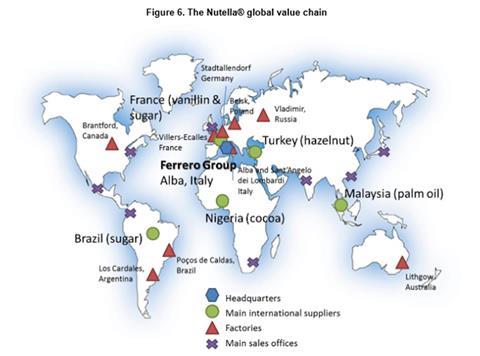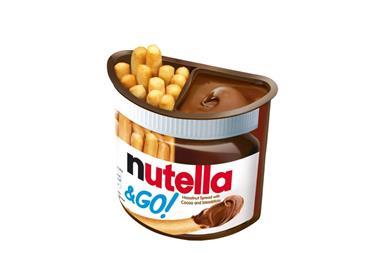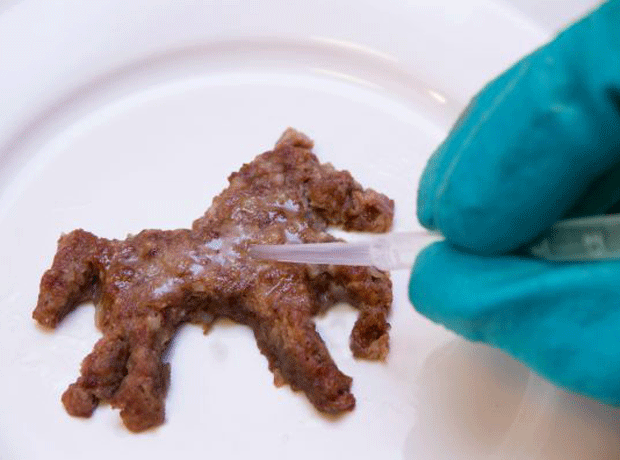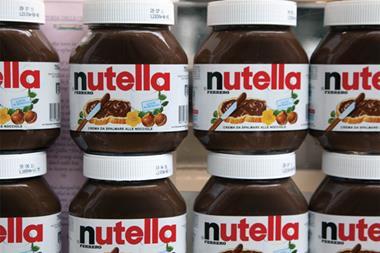Hazelnuts from Turkey, sugar from Brazil, vanilla flavour from France, palm oil from Malaysia and cocoa from Nigeria – making Nutella is a highly international business.
The global supply network behind Ferrero’s famous hazelnut spread has been highlighted in a policy paper on global supply chains published by the OECD.
Using Nutella as a case study for supply chains in the agri-food sector, the paper’s authors mapped out where Ferrero’s key ingredients came from as well as the locations of its factories and main sales offices.
“The agri-food industry is increasingly structured around global value chains led by food processors and retailers,” they said. “Supermarkets, for example, work both with importers and exporters and want to control how products are grown and harvested.”
The supply chain behind Nutella (see fig, below) was a representative example of such chains, the report added. Ferrero had its headquarters in Italy and nine Nutella-making factories around the world – five in Europe, one in Russia, one in North America, two in South America and one in Australia.

“Some inputs are locally supplied, for example the packaging or some of the ingredients like skimmed milk. There are, however, ingredients that are globally supplied: hazelnuts come from Turkey, palm oil from Malaysia, cocoa from Nigeria, sugar from Brazil (but also from Europe) and the vanilla flavour from France. Nutella is then sold in 75 countries through sales offices.”
How agri-food compares with other sectors
Although agri-food chains are becoming increasingly long and fragmented, they are still shorter than in many other industries, according to the OECD paper. Of 36 industry sectors analysed, food products rank 14th in terms of supply chain length, with agriculture coming in at 24th. The sectors with the longest chains are TV and communications equipment; motor vehicles; basic metals; textiles; leather and footwear; and electrical machinery.
Meanwhile, on a country-by-country basis, the UK stands out as having comparatively short supply chains: it ranks 39th out of 51 for the average length of its agriculture supply chains, and 50th out of 51 for the length of its food products chains.
“Aggregate data on the length, participation and distance to final demand confirm what could be highlighted with the Nutella case study. Food products are globally produced in value chains where both developing and developed countries are involved,” the OECD paper said.
“The data do not indicate that developing or developed economies are confined to specific roles. For example, both Sweden and China can be found very upstream in agriculture value chains and conversely, both Vietnam and Germany are quite downstream in the food products value chain.
“As exemplified with the Nutella supply chain, being close to final consumers and to specific inputs suppliers matters for the agri-food industry and the same activities can be located in developed and emerging markets.”

















No comments yet